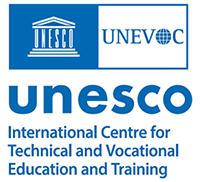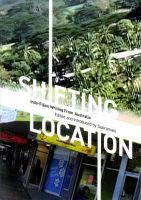
The UNESCO-UNEVOC International Centre: Who We Are | What We Do | Working With Us | Get in Touch
The UNEVOC Network: Learn About the Network | UNEVOC Network Directory
For Members: UNEVOC Centre Dashboard
Thematic Areas: Inclusion and Youth | Digital Transformation | Private Sector Engagement | SDGs and Greening TVET
Our Key Programmes & Projects: BILT: Bridging Innovation and Learning in TVET | Building TVET resilience | TVET Leadership Programme | WYSD: World Youth Skills Day
Past Activities: COVID-19 response | i-hubs project | TVET Global Forums | Virtual Conferences | YEM Knowledge Portal
Our Services & Resources: Publications | TVET Forum | TVET Country Profiles | TVETipedia Glossary | Innovative and Promising Practices | Toolkits for TVET Providers | Entrepreneurial Learning Guide
Events: Major TVET Events | UNEVOC Network News
 First the germ; the seed: A chance meeting between an Indo-Fijian filmmaker and an officer of an art house in Sydney, Australia.
First the germ; the seed: A chance meeting between an Indo-Fijian filmmaker and an officer of an art house in Sydney, Australia.
A chance meeting led to a formal invitation of the filmmaker to Casula Powerhouse to discuss the possibility of a documentary film about the doubly-displaced Fiji Indians in the Liverpool area of Sydney, where the community constitutes the largest migrant population.
Through the deliberation it was realized that, initially, a book on the plight of Fiji Indians might throw up more varied themes for exploration in the film medium later. Fiction could be a good form for grappling with the complex issues of movement of cultural products, goods and capital to a new location and the creation of new alliances.
It was agreed that the proposed publication should engage the Indo-Fijian community in some significant way, and writing might be generated through a series of workshops at Casula Powerhouse. Funding for the publication was to be sought from NSW Arts and the Australia Arts Council. Casula Powerhouse agreed to be the book’s publisher.
That in brief is the genesis of Shifting Location (2009)—an anthology of writing by Indo-Fijian writers on the subject of moving from one’s homeland and establishing roots in a new location.
I was appointed the editor of the proposed book. Exactly thirty years ago, I had edited the first anthology of writing by Indo-Fijians entitled The Indo-Fijian Experience (1979). It was a commemorative publication celebrating one hundred years of the presence of people of Indian origin in the Fiji Islands.
That publication had come about in a different historical circumstance: Fiji had gained political independence in 1970; it was time of great optimism as Fiji set out to set up an ideal multicultural society, ‘the way the world should be’; and the newly established university provided the opportunity for raising the levels of higher education and for fostering intellectual and cultural debates. The book was meant to demonstrate how the interplay of history and literature was producing new self-definition. The Indo-Fijian writers in the community were engaged in creating works of fiction that they hoped would contribute to a grand narrative about the nation.
It is a great paradox of history that thirty years later, I was called upon to edit another book that was to be about displacement and dislocation. Since the 70s, Fiji’s social and political life has been vastly transformed through the traumatic experience of a series of coups and their aftermath.
Some 120,000 Fiji Indians left Fiji after the 1987 coups. The largest group, about forty per cent, settled in Australia. Many of them weren’t willing migrants or exiles. Some of them boarded an airplane for the first time. For the majority, Fiji hasn’t ceased to be their home: they form a classic example of a diasporic people living in one country and forever dreaming of another.
The Indians of Fiji had swiftly transformed into global souls; they now travel frequently from Australia to Fiji, and further abroad to visit relatives in New Zealand and Canada. India, lost to them for generations since indenture, took on a real shape and meaning: many of them have re-established contact with the villages from where their forefathers had migrated as indentured workers.
The coups in Fiji have given rise to many different kinds of narratives, written and unwritten. Shifting Location anthologizes part of the troubled story of the descents of the indentured Indians coming to terms with their new situation.
Support for literature isn’t easily forthcoming in any community. We sent out letters explaining our project to prominent member of the Indo-Fijian community. We received a couple of favourable responses: a businessman gave stationary and attractive folders for the workshops, and a cultural organization placed its signature to the application for funds.
Our application received a positive response from the NSW Arts. With that, things started to move for us. The established writers, many of whom had contributed to the Indo-Fijian Experience, readily promised to write for the new book. And a handful of new writers came to the workshops. They were from diverse backgrounds and included a gynaecologist, a filmmaker, a yoga teacher, and students who had recently graduated from universities in Sydney.
The presence of an experienced journalist/creative writer from Fiji brought in added expertise to the workshops, where we read each other’s writing and helped in realizing the full imaginative potential of the pieces. Modern technology, namely email, kept us connected during the editor’s six months sojourn in India as a visiting professor. In fact, the most productive part of the editing exercise was done through email.
The anthology took almost a year to come together. It now seems almost magical how the contributions evolved into a book that depicts a complex human phenomenon, encompassing themes of exile and identity, ambivalence and contradiction in the new location, memories of homeland, coming to terms with cultural heritage and embracing the new reality. The range of writing is equally varied, from autobiographical and realistic stories to prose poem and fabular fiction.
There are altogether fourteen pieces in the book, four by women authors. The main protagonist in the book is Fiji itself. The imagination of all the writers is anchored in Fiji and their lost origin.
For most Indo-Fijian writers, reclaiming Fiji is the first necessary step towards coming to terms with the new predicament after the coups and dealing with the problems of belonging and not belonging, cultural continuity and living in multiple identities.
Subramani is a Visiting Professor in Literature at the Fiji Institute of Technology (a UNEVOC Centre). Shifting Location is published by Casula Powerhouse in Sydney, and it is distributed by the Fiji Institute of Technology Bookshop, P.O.Box 3722, Samabula, Suva Fiji.
Links
Fiji Institute of Technology (UNEVOC Network Online Directory)